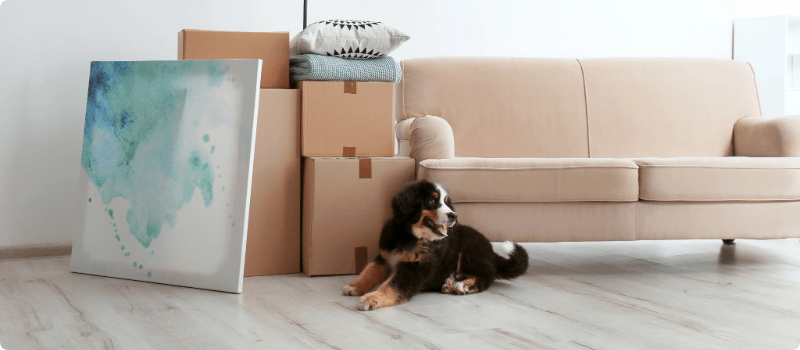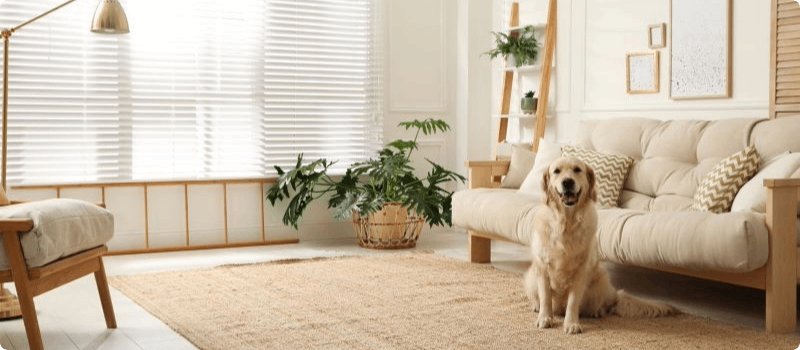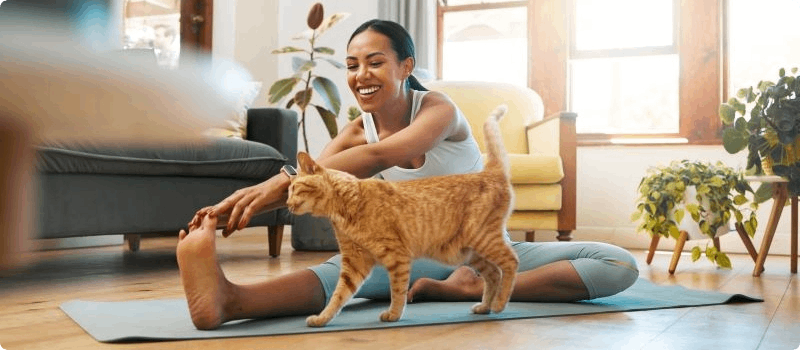
Did you know?
According to the Insurance Information Institute, the average liability claim related to dog bites was $64,555 in 2022. Many claims are higher.
Updated May 2, 2024 . AmFam Team
If you're a renter with a pet, many standard renters policies can help shield you from unexpected losses. However, standard coverages have limitations.
This article explains how a standard renters policy covers you. It also addresses its restrictions and additional coverages that may be able to deliver more peace of mind protection.

Our standard renters insurance policy provides liability coverages that apply to your pet. It helps deliver financial protection from liability claims after a covered event. Examples include accident-related lawsuits, medical expenses and property damage caused by your animal.
Bodily injury liability is typically included in your standard renters insurance policy. It helps protect you from injury-related losses caused by your pets after a covered loss up to your policy's limit. The coverage helps you pay for unexpected damages, such as medical bills from bites or any other physical harm your pet may inflict on others.
The property damage liability portion of your renters policy may help pay for covered losses up to your policy limit. It's designed to help protect you if your pet damages someone's property. For example, if your dog breaks your guest's new phone, your renters insurance may help pay for a replacement.

According to the Insurance Information Institute, the average liability claim related to dog bites was $64,555 in 2022. Many claims are higher.

Our renters liability coverage limits typically range from $100,000 to $1,000,000. If you need more clarification on your requirements, an American Family agent can help you select a limit that fits your needs. You can also get a custom renters insurance quote online.
Personal umbrella liability insurance can help deliver more peace of mind protection. It becomes active after reaching your renters policy's liability limits. The added insurance can also help cover other accidents for which you may be held liable.*
Adding a pet health insurance policy to your American Family coverages can help protect your pet's well-being. It provides medical-related coverage for dogs, cats, fish or birds.**

While your renters insurance helps protect you from various pet- and dog-related accidents, there are some events it can’t cover. For example, if your pet damages anyone in your household’s belongings, the items won’t be protected. Pet damage to your rental property, such as its carpet and woodwork, is also excluded from your policy.
You may encounter dog and pet restrictions when applying for a renters policy or a rental unit. Here are a few to consider:

Immediately record the event details after a pet-related incident, such as a bite. You should also get the victim's contact information and list your pet's previous bite history.
To file a liability claim for a pet-related event, contact American Family Insurance in one of the following ways:
If your dog struggles with destructive behaviors, such as barking and chewing, consider the following tips:

To sign up for a renters insurance policy and get coverage for your pet, start a quote online or contact your local American Family Insurance agent.
This information represents only a brief description of coverages, is not part of your policy, and is not a promise or guarantee of coverage. If there is any conflict between this information and your policy, the provisions of the policy will prevail. Insurance policy terms and conditions may apply. Exclusions may apply to policies, endorsements, or riders. Coverage may vary by state and may be subject to change. Some products are not available in every state. Please read your policy and contact your agent for assistance.
This information does not, and is not intended to, constitute legal or financial advice. You should contact a professional for advice specific to your situation.
*Descriptions provided here offer general information regarding umbrella insurance. The full scope of liability umbrella coverage is subject to the umbrella policy provisions. To qualify for personal liability umbrella insurance, you must meet minimum liability limits for all applicable underlying policies, such as auto, home, renters, boat and recreational vehicle.
**Pet health insurance is administered by Embrace Pet Insurance Agency, LLC and underwritten by one of the licensed insurers of American Modern Insurance Group, Inc., including American Modern Home Insurance Company d/b/a in CA as American Modern Insurance Company (Lic. No 2222-8), and American Southern Home Insurance Company. Coverage is subject to policy terms, conditions, limitations, exclusions, underwriting review, and approval, and may not be available for all risks or in all states. Rates and discounts vary, are determined by many factors, and are subject to change. Wellness Rewards is offered as a supplementary, non-insurance benefit administered by Embrace Pet Insurance Agency in the United States.